Montepulciano (Mon-teh-pool-chee-ah-noh) is the second most widely planted red grape variety in Italy, after Sangiovese. It is cultivated all over the peninsula, especially on the Adriatic coast in the central and southern regions, and it is the grape used for one of the most popular Italian wines, Montepulciano d’Abruzzo.
Primary Flavors
Blackberry
Blueberry
Violet
Leather
Grape Profile
TANNIN: Noticeably Firm, Structured
ACIDITY: High Acidity, Tangy and Crisp
BODY: Rich, Smooth, and Layered
SUGAR: Completely Dry, No Residual Sugar
LEVEL OF ALCOHOL: Fairly Strong (12-14%)
Handling
Serve 16-18°C
Decant 1 hours
Glass Type Large Balloon Glass
Period open3-5 days
Cellar Up to 5 Years
Our Top selection

Montepulciano d'Abruzzo DOC
Read more
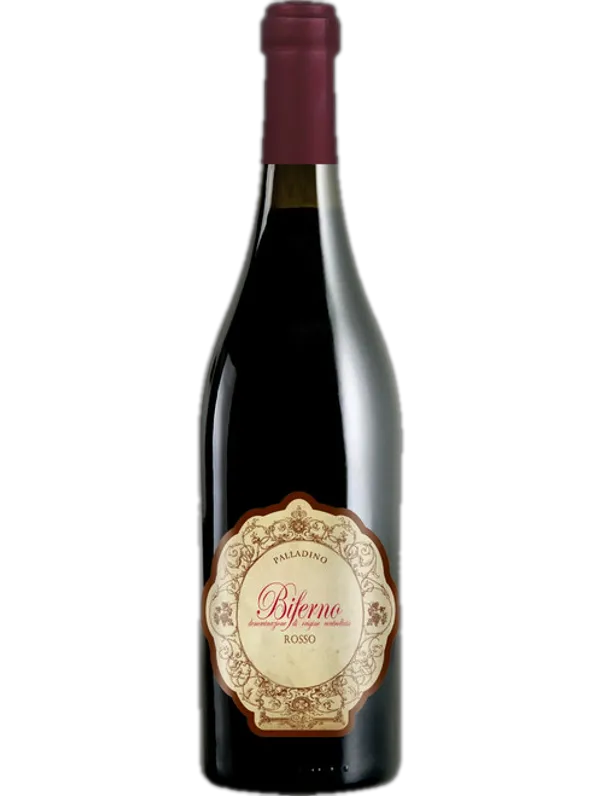
Biferno Rosso DOC
Soft and medium-bodied with a nose of blueberries, cherries, and oak. Enhances with brief aeration; ideal for immediate enjoyment or cellaring for up to 2 years.
Read more
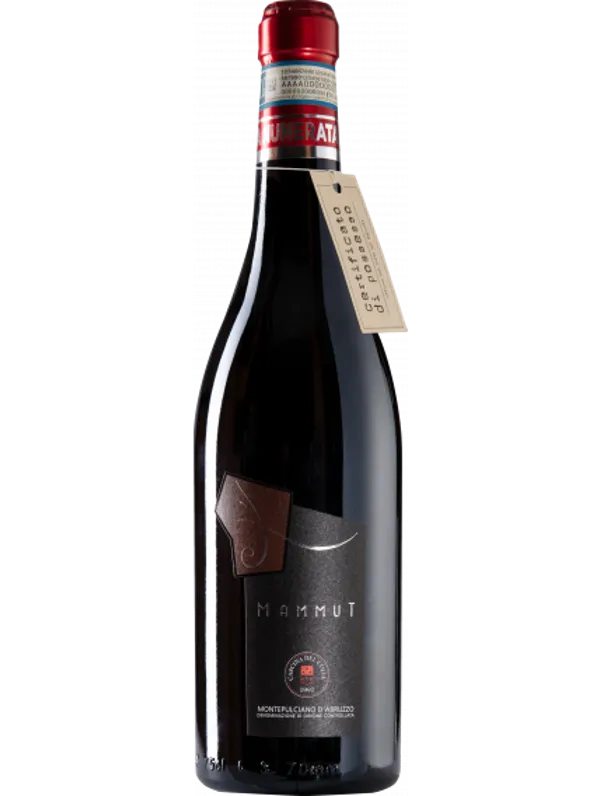
Cascina del Colle Mammut Montepulciano d'Abruzzo
Crafted by the third-gen D'Onofrio family in hilly Villamagna. Features a plum-blackcurrant profile with umami nuances and a persistent acidity. Pairs well with pasta and pizza.
Read more
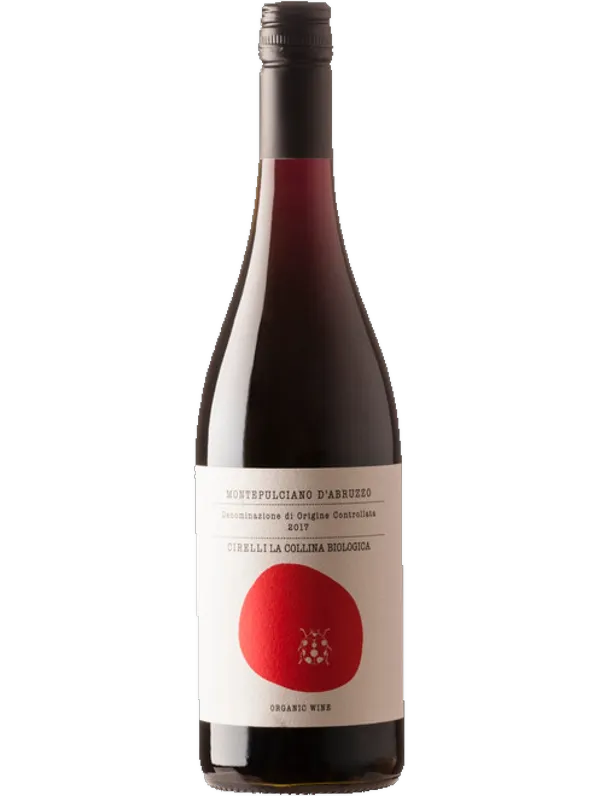
Montepulciano d'Abruzzo DOC Anfora Organic
Deviates from traditional Montepulciano. Showcases a spectrum of red plum, blackberry, and thyme. Light and fresh on the palate.
Read more
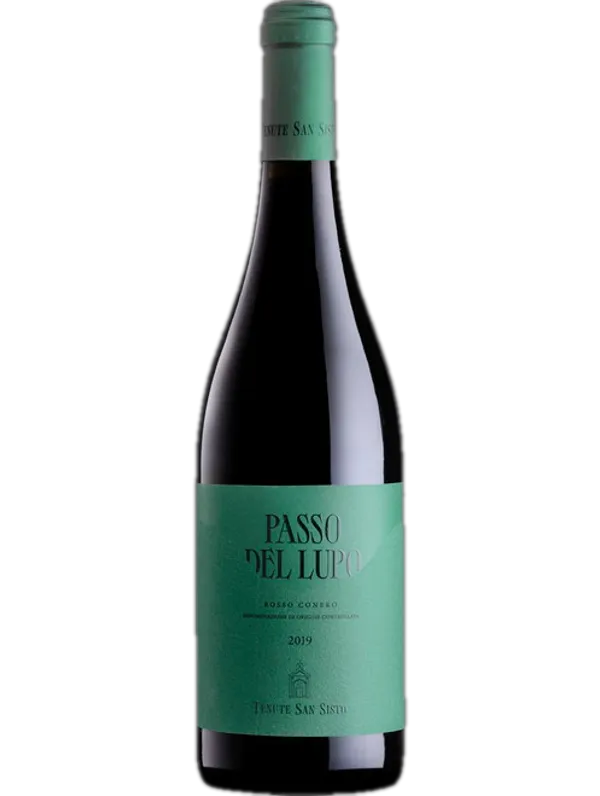
Passo del Lupo Rosso Conero DOC
Its brilliant ruby-red hue gives way to a complex bouquet of wild berries, wildflowers, and red fruits. Experience elegance, well-rounded richness, and pleasing concentration.
Read more
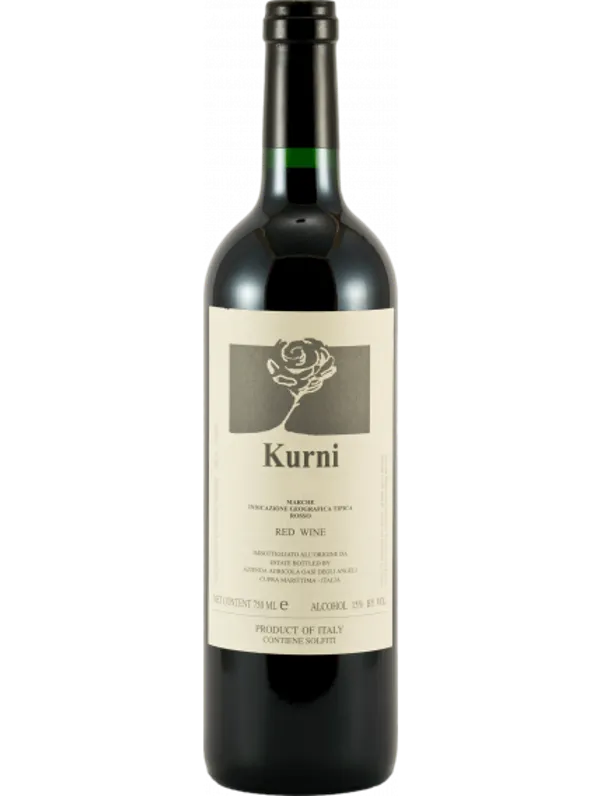
Oasi degli Angeli Kurni
A Montepulciano showpiece from Marche. It greets you with complex aromas of sour cherry, ripe plum, and subtle notes of leather. Aged in French oak, its well-rounded body makes it worthy of cellaring for a decade or more.
Read more
Montepulciano Regions
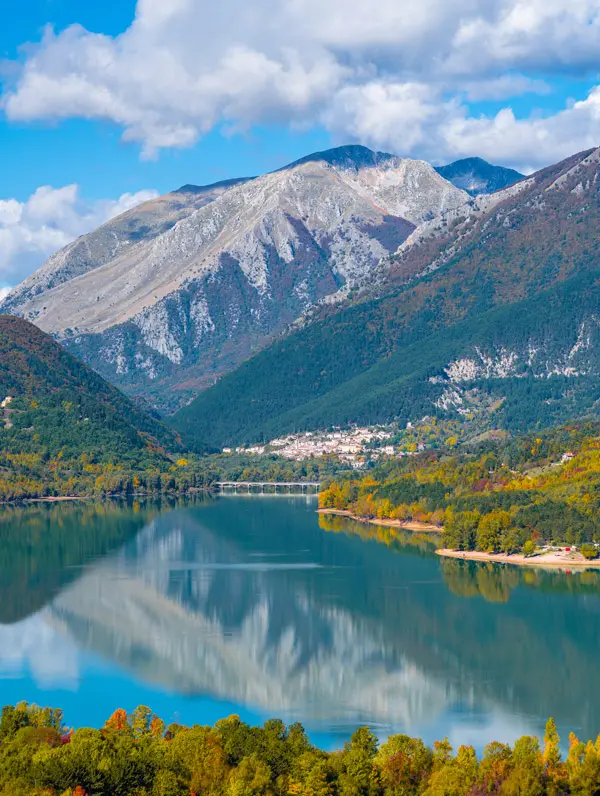
Abruzzo
Abruzzo’s unique geographical position makes for excellent food and wine discoveries, full of tradition and culture.
Read more
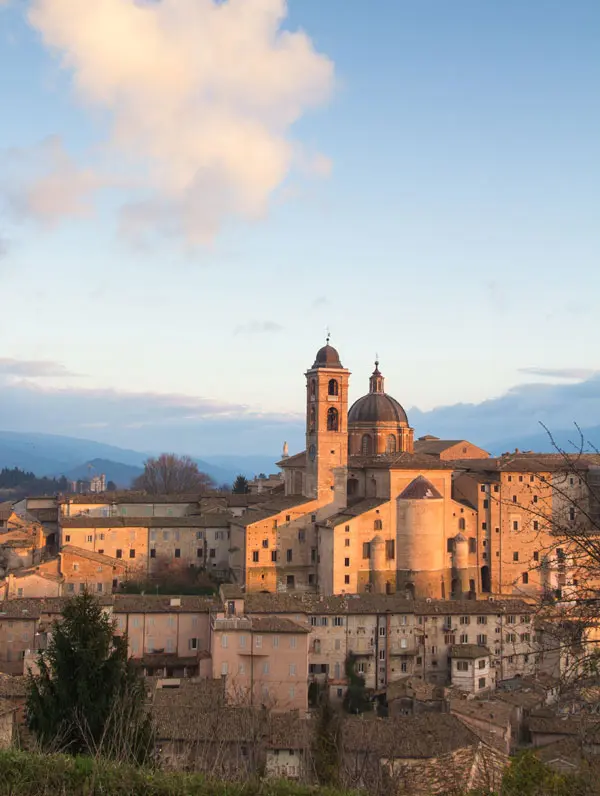
Marche
Marche has beautiful landscapes and authentic homemade food as well as great wine.
Read more
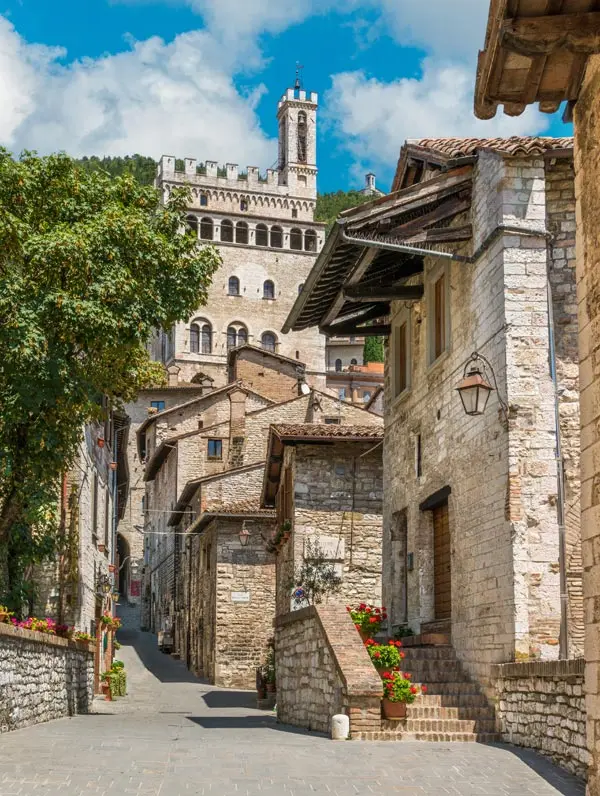
Umbria
Umbria is a unique region where you can taste some classic Italian wines.
Read more
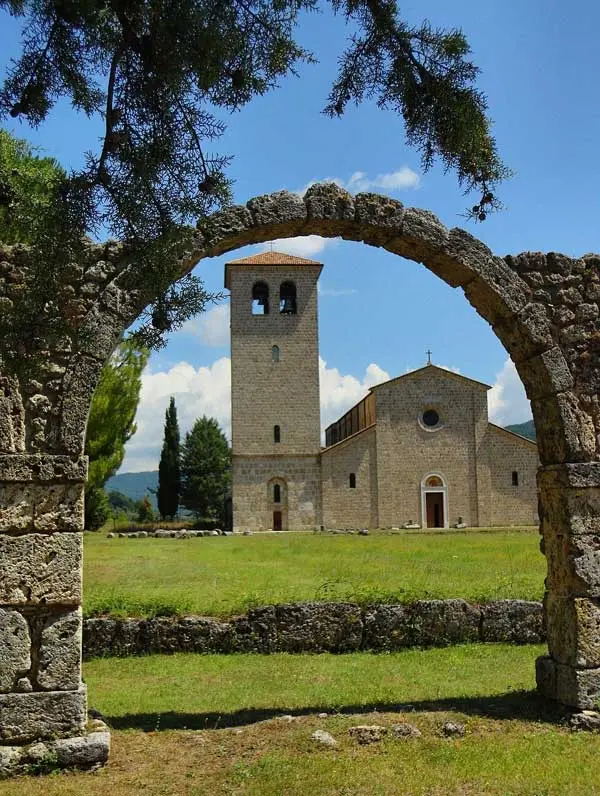
Molise
A region full of wine and food; visiting Molise is like stepping back in time.
Read more
Food Parings

Starter: Arrosticini (lamb skewers)
A classic street food from Abruzzo that pairs nicely with a glass of Cerasuolo.

Main course: Pizza
Montepulciano wines have an affinity with simple rustic food, so choose your favourite pizza and pair with a young Montepulciano d’Abruzzo.

Dessert: Cherry tart
This dessert is the perfect summer treat, when cherries are ripe and easily available. It pairs perfectly with a Montepulciano Passito.
Montepulciano wines make for amazing food companions as they can match extremely well with a vast variety of dishes. The younger wines pair superbly with pasta, vegetarian dishes or white meats and poultry, whilst the more complex and aged wines match well with lamb, game and aged cheeses, such as Pecorino.
Montepulciano Cerasuolo - a rose version of Montepulciano - is perfect with soups and fish, but you can also try it with spicy cuisines, such as Indian or Thai: its acidity and soft tannins will enhance flavours.
FAQS
What kind of wine is Montepulciano?
Montepulciano wines are globally appreciated for their smooth flavors, deep colour and fine tannins. Montepulciano has developed a reputation for its dry red table wines, as well as in the rose Cerasuolo d’Abruzzo.
What does Montepulciano taste like?
Young Montepulcianos are explosively fruity with good acidity, The more structured and older Montepulcianos display soft tannins and spicy aromas with plenty of dark fruit, notes of tobacco and leather.
Is Montepulciano dry or sweet?
Montepulciano is usually produced as a dry wine, although delicious sweet (passito) versions are available on the market. The passito production is limited and its bottles are often difficult to be found outside of Italy.
Where is Montepulciano produced?
Most Montepulciano wines are produced on the Adriatic coast in the central and southern regions of Italy but, arguably, the best quality of Montepulciano is found in Abruzzo.
What should I eat with Montepulciano?
Montepulciano is the ideal wine to pair with meat-based dishes, particularly roasts. It pairs superbly with lamb, but also with typical dishes of the Abruzzo tradition, such as lasagna with meatballs, fresh pasta with tomato-based sauces, meat skewers, braised meats and game.
Want to know it all?
Montepulciano Primary Flavours
Montepulciano grapes make full-bodied red wines with a good predisposition to wood ageing. Young wines are mainly characterised by red fruit notes with hints of flowers, whilst aged examples can show tertiary aromas of spices and young leather. Here are some of Montepulciano’s primary flavours:
Blackberry
Blueberry
Violet
Leather
Handling of Montepulciano
Serving temperature:
16-18°CGlass type:
Large balloon glassSuggested time in Decanter:
1-2 hoursLasting period once open:
3-5 daysStoring time in the cellar:
Up to 5 years
Decanting time for Montepulciano wines can vary based on a number of factors including the age of the wine, its tannic structure, and personal preference. However, here's a general guideline:
Young Montepulciano
30 minutes to 1 hourYounger wines are usually more fruit-forward and may not require much time to open up.
Aged Montepulciano
1 to 2 hoursOlder, more complex wines can benefit from a longer decanting time to fully express their flavors and aromas.
Wines made from Montepulciano
Cerasuolo d’Abruzzo:
Formerly known as Montepulciano Cerasuolo, today this wine is labelled as Cerasuolo d’Abruzzo. Resulting from a direct pressing of Montepulciano grapes, this wine was the first pink DOC in Italy. It is fruity and refreshing with an appealing cherry-like colour - the name Cerasuolo actually derives from ‘cherry red’ in Italian.
Montepulciano d’Abruzzo:
This wine is characterised by intense floral and fruity aromas, alongside a remarkable acidity, which is superbly offset by its body and soft texture. The best examples come from the north of Abruzzo, at the foot of the Teramo Hills.
Montepulciano Riserva:
Montepulciano Riserva wines are aged in oak barrels or barriques for a minimum of 12 months. They display a bouquet of red fruits, sweet spices and leather.
Passito di Montepulciano:
The grapes are picked after they have raisined and result in wines that express aromas of ripe red fruits, spiced with cloves and licorice. They are velvety and persistent with balanced tannins.
History of Montepulciano
According to the most accredited theory, Montepulciano originates from Torre de' Passeri or the Peligna basin, in Abruzzo. From here, it spread throughout the region in the early 1900s and into southern Marche.
For a long time this grape was confused with Tuscan Sangiovese and it was only in the ampelographic studies of the 19th century that the difference between the two grapes was established.
Today, Montepulciano is widespread throughout central-southern Italy, especially in the Adriatic regions, from the hills of Rimini to the province of Lecce, but Abruzzo is still its main home.
Consumer info
Price averages: £8-10
Best pairing with pasta:
pasta with meaty sauces, like tagliatelle and raguBest pairing with risotto & rice:
Milanese risottoBest pairing with meat:
lambBest pairing with fish:
swordfishBest pairing with cheese:
medium aged cheeseTop 3 cuisines that pair well:
Italian, Korean, Thai
